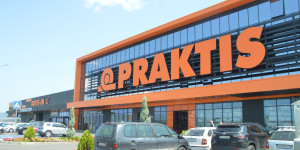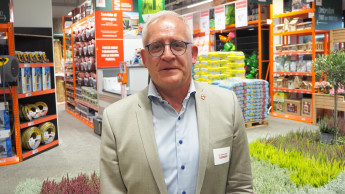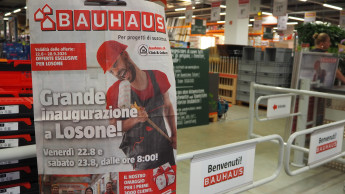“It's a revolution.” Anyone who says something like that about their product or concept must be very confident — especially in an industry as tightly networked as the DIY retail sector — if they want to continue to be taken seriously in the future.
Sven Schreieck is very confident when he proclaims a revolution in underlay materials: “Such a concept has not existed on the market until now.” He is referring to the customer-guidance and product-selection concept developed by the new supplier Powerlay. It is currently being presented to several major international DIY chains in the DACH region and beyond.
And Schreieck knows what he is talking about. He has been in the industry for 25 years and has focused on underlays for 20 years. He worked for Selit for a long time and, after briefly managing his family's business in a completely different sector, has joined Powerlay's management team to — well — set a revolution in motion.

What is it about? Simply put: simplification — from the customer's perspective. For the customer, this product, which once installed is no longer visible, is a problem. Even though they don't see it, they still have to deal with it. So far, Schreieck and Powerlay CEO Jakub Prętki analyze, the customer is left more or less alone at the POS with technical details. “The market,” says Prętki, “has not changed in 20 years.”
Powerlay's POS system intends to do things radically differently — and radically more simply. The consumer only needs to answer one simple question to be guided to the right product: “Do you have underfloor heating?” Based on the answers, the customer is directed to one of three main categories: underfloor heating, insulation, or LVT.
These categories are further divided into three performance levels: One, Pro and Ultra. The supplier is confident that this achieves the best balance between price, comfort and quality. In addition, each category also offers an Eco variant. “That's another area where we differ completely,” emphasizes Sven Schreieck. “Others might offer such a variant, but we provide it at every quality level — and not only for laminate but also for LVT floors.”
He highlights another point in this context: while other recycling products often only reuse the scraps and waste generated in their own production, Powerlay can process customer-sourced recycled materials and bio-polymers.

Behind Powerlay is production know‑how with decades of experience in plastics and films. They therefore know the production processes and standards for manufacturing underlays. They master all technologies — not only for XPS foams but also for PE and NXL/PU foams. Sven Schreieck is convinced — hence the term “revolution” — that the combination of quality production with decades of know‑how and a presentation that is easy to understand because it is radically simplified will work even for a low‑interest topic like underlays.
Now it's a matter of convincing the market. To achieve that, Schreieck also has arguments that address some of the current challenges of the DIY trade. If a customer stands baffled in front of the shelf, this also has a negative effect on retailers. If a customer — confronted with a wide range of products with different properties — does not know by which criteria to make their choice, they usually pick the cheapest option or simply turn away and forgo the purchase — thereby costing the retailer sales and margin.
Added to this is the shortage of sales staff, from which DIY stores are by no means spared. The customer‑guidance system eliminates the need for extensive advisory support and allows store employees to focus on other tasks instead. All in all: Powerlay wants to give retailers an opportunity to increase customer satisfaction and, at the same time, area yield.
These arguments are indeed being heard at DIY head offices. Rollouts are currently underway; in spring 2026 Powerlay products will appear in the first DIY stores. And not only the products, but also the idea of simplicity. Or, as Sven Schreieck says: “A revolution.”

 Menü
Menü
















 Newsletter
Newsletter